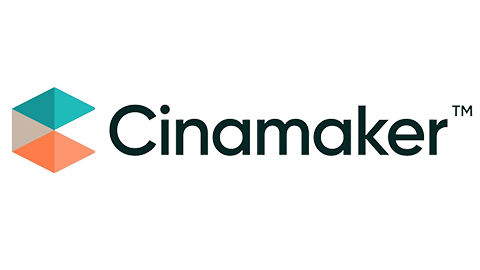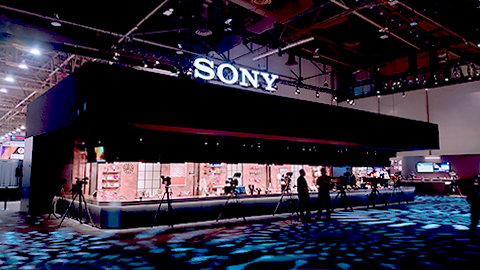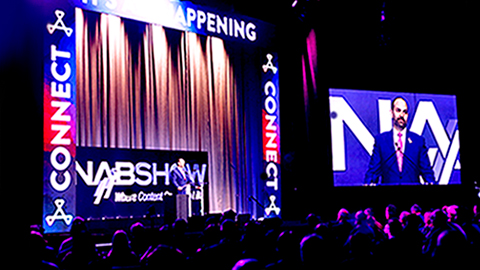NAB Show Preview
Q&A Series: Creator Squared
Robin Raskin, Founder, The Virtual Events Group (VEG) and programming partner of Creator Squared, special programming at NAB Show where top creators, brands and the audio/video industry meet for a series of roundtables, networking and information exchanges, recently provided her perspective on important industry trends.
For more insight and expertise add these sessions to your myNAB Show:
From Zero to Influencer: Stories of Success in the Creator Economy
Zoom for Creators: How Cinamaker Turns Zoom into a Pro-Quality, Live and On-Demand Production Studio
Video: Do It Yourself and Do It at Scale, Availability I
Video: Do It Yourself and Do It at Scale, Availability II
Lights, Camera, Action: Building the DIY Production Studio
Creative Storytelling with AI, Availability I
Creative Storytelling With AI, Availability II

Q. What are the biggest trends impacting the community/industry right now?
The ascendency of creators. No longer just relegated to non-professional grainy videos of cats riding Roombas and visits to the dentist, professional creators are now creating content and businesses that rival some of the top media companies. Creators including Rhett and Link, Emma Chamberlain, Mark Rober and Mr. Beast command bigger audiences, larger sponsorship dollars and greater reach and effectiveness than many of the top TV shows and ads. And now they are moving into television through FAST channels on Roku and other devices and much more. In recent studies, GenZ and GenA see being a creator as an aspirational career. (29% of U.S. children want to become a Youtuber/Vlogger when they grow up.)
In addition, they are launching their own brands that rival, or eclipse, traditional products. Head to Walmart for example and much of the most valuable shelf space has been granted to creator-led brands, rather than traditional companies – from Feastables to Pink Sauce, Ryans World Mystery Pineapple, Cocomelon’s Build-A-Vehicle and many more. This trend has been accelerated by the advertising pullback from traditional media as creators push into more traditional media and brand environments to capitalize on their celebrity.
The US government’s continued crackdown on TikTok. This could lead to a countrywide ban of the popular app, has pushed creators to also embrace YouTube’s Shorts and Instagram’s Reels. No longer is TikTok the king of short-form video. This means that more and more creators will emerge from other short-form platforms, which it could put a damper on the acceleration of TikTok as the primary online video platform for GenZ and GenA. And in the end, YouTube remains the primary place for sustainable creators to be discovered, grow and build into big media businesses.
An Ecosystem is Born. As the creator economy matures an entire ecosystem of talent managers, aggregate sites, new delivery channels, fandom merchants, merchandising and hardware developed expressly for the creator market is emerging. The creator ecosystem today is worth 1.402 billion dollars and growing.
Q. What challenges do media companies need to overcome because of these trends?
Discovery. Embracing creators and their communities as the trend away from linear television and cable bundles continues. With less than half of the US now subscribed to a traditional TV bundle, it’s harder to reach audiences, particularly those younger than 35. Creators offer a cost-effective and powerful way to reach those audiences, but treating them like traditional advertising vehicles is a loser’s game. Brands need to catch up on the move away from traditional celebrity endorsements and cultivate authentic, original talent.
In addition, for traditional TV producers, thinking of online video creators as just “talent”, to be folded and spindled into traditional production models is also a path toward irrelevance. Creators today are essentially CEO’s of DTC brands (Direct to Consumer, Direct to Community) that deliver significant attention, awareness and revenue to their growing companies. Partnering with them, letting them in many ways take the lead, is the only way to forge success in this new media landscape.
Q. What’s one thing you wish more media pros knew about?
- All online video platforms are not the same and all creators are not the same. However, creativity is distributed evenly around the world, which means the next big creator could come from Italy, Africa, Indonesia, or Brazil. In fact, they already have. The reason most traditional media stars ended up in New York or LA is that’s where the gatekeepers are. In a creator-first world, top talent is emerging and building huge communities in every region around the world. Don’t sleep; explore places outside your comfort zone.
- There is a big audience for professional and semi-professional hardware and software as creators take center stage. Cameras, lighting and software programs including Generative AI are all beginning to cater to the needs of professional creators.
- Every company, including media pros, needs a creator strategy to build their community and brand loyalty. The creator generation is looking for authentic role models.
Q. What are the top things that attendees should go hunt down on the show floor to expand on what they just learned in your sessions?
- Find the product equipment designed for run-and-gun and low-cost production that creators use to stay authentic and move quickly. The iPhone and Pixel Pro line of phones are just as good – and often more so – than that super-expensive camera in your studio. Think fast, inexpensive and authentic feeling rather than over-produced, glitzy and perfect. Today’s younger audiences want to see real, non-hyped and de-influenced content.
- Think about easy ways to go live and sell things. Shoppertainment is here, and creators are finding new ways to sell all sorts of things via fun and entertaining live streams. Those companies that make it easy and cheap to quickly create live entertainment by selling products as a core function will be the ones to watch.
- As podcasting goes from audio (back) to video, with YouTube Spotify and other companies leaning into the visual side of the audio format, look for companies that combine the podcasting flexibility of Rode, Black Magic, Cinamaker, Wowza and with the easy video creation and editing.
- Generative AI will continue to boost the creator’s efforts. New companies like Descript, Wochit and AugXLabs are mashing up ChatGPT, Dall-E, Stable Diffusion and others to create easy-to-use video creation and editing tools. Seek out these small innovative companies building incredible cost-saving and productivity-enhancing tools on top of the emerging generative AI stack.



